“Now you sit right here and you’ll start to glisten in just a few minutes.” I must look confused. The woman smiles warmly as she hands me a cool towel and explains, “In the South, a woman doesn’t sweat, she glistens.”
Her singsong accent echoes off the warm walls of the steam cave. I sit back and, indeed, am soon glistening.
I’m not sure I’ve ever felt more welcomed than I do in Hot Springs, Arkansas. This little town in the Ouachita hills is an hour away from Little Rock. It’s a wonderful combination of spa town, national park, and hospitality. (Note: Ouachita is pronounced WAW-shee-ta.)
People first came to Hot Springs because of the soothing warm waters. Indigenous people discovered the thermal pools thousands of years ago and considered the “Valley of the Vapours” a neutral area. People came to focus on peace, health, and relaxation.
While the springs are certainly still appealing, people have kept coming to Hot Springs because of the welcoming friendliness.
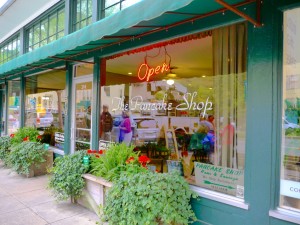
My first morning in Hot Springs starts in The Pancake Shop. With owner Keely Ardman DeSalvo’s welcoming smile, I know that their website description—“We want you to feel welcome the minute you walk in the door”—isn’t just a slogan.
The restaurant opened in 1940 and has been owned and operated by the Ardman family since 1966. It’s been running under female leadership since 1980, first by Keely’s mother and then by Keely herself. Breakfasts are all made to order and from scratch, with old-fashioned ingredients like real maple syrup and butter. The juice is freshly squeezed. All staff are knowledgeable about the area and are happy to provide advice about how you should fill your time in Hot Springs. It’s no wonder The Pancake Shop is so popular that there’s often a wait to get in.
There is, however, rarely much of a line. If a table isn’t ready when you arrive, the host directs guests next door to The Savory Pantry. There, your wait goes by quickly as you sip fresh coffee, sample treats from the South, the U.S., and around the world, and stock up on cocktail and kitchen supplies and ingredients.
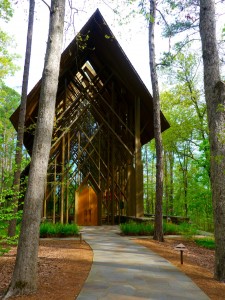
Another Hot Springs attraction with strong female leadership is Garvan Woodland Gardens (admission $15). Depending on when you visit this 210-acre greenspace on the shores of Lake Hamilton, you might be welcomed by its founder, Verna Cook Garvan.
After arriving at the gardens, I begin my wanderings at the stunning Anthony Chapel, designed by architects E. Fay Jones and Maurice Jennings. Admiring the budding trees through the six-story glass walls, I’m surprised by the entry of a woman whom I later learn is the garden’s director of visitor services and coordinator of volunteers, Susan Harper.
With the fashion, accent, and attitude of Mrs. Garvan, Susan tells the life story of this “properly-raised Southern lady” born in 1910. Unusually for the times, she learned business skills from her father and then took over and grew his businesses after he died. However, she was married to a “scoundrel” who tried to get her permanently committed to an insane asylum to take control of her assets. Ridding herself of this husband and with new purpose, Mrs. Garvan began landscaping her family’s property, focusing on rare plants. She later bequeathed the property to the University of Arkansas so that it can welcome visitors and “provide them with the joy and repose it had offered her.”
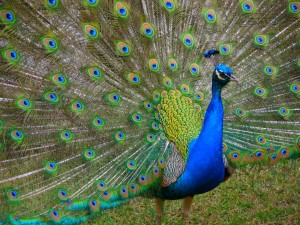
Strolling by the great lawn, I’m next welcomed by a fine peacock who proudly unfurls every tail feather as soon as he sees a camera pointed at him. Garvan Gardens’ bridges, waterfalls, ponds, and thousands of plants, shrubs, and trees host 70 other bird species, most of them a touch more reserved than the peacock.
Hot Springs has plenty of outdoor offerings in and around its three nearby lakes. There’s hiking and mountain biking, canoeing and kayaking, horseback riding and ziplining, golf and disc golf, and more. At Oaklawn Park, you can watch Thoroughbreds race. American Pharoah, the only American Grand Slam winner, won the Arkansas Derby here in 2015.
The town hosts festivals for live music and documentary films as well as the world’s shortest St. Patrick’s Day parade for 15 years running. Hot Springs is ranked as one of the 100 Best Art Towns in America, and the first Friday of every month features a Gallery Walk. The Ozark Bathhouse, a Spanish Colonial Revival building from the 1920s on the edge of Hot Springs National Park, has been turned into a cultural center and art gallery.
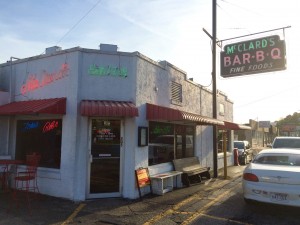
The welcoming attitudes continue at Hot Springs’ eateries. McClard’s Bar-B-Q, established in 1928, even welcomes the Clintons on occasion, though fourth-generation owner Scott McClard tells me they usually eat his famous ribs in the kitchen. Despite growing up in Hot Springs, even Bill Clinton can’t reserve a table at McClard’s because everyone is welcomed equally.
My favorite Hot Springs restaurant is DeLuca’s Pizzeria Napoletana, which serves the best pizza I’ve eaten outside of Italy. Chef-owner Anthony Valinoti moved to Hot Springs from Brooklyn, New York, because he got such a good feeling from town residents.
“People welcomed me here, they took me in. People are genuinely nice here,” he tells me. He’s welcoming right back. He often comes out of the kitchen to make sure his guests are enjoying his pies—made with hot spring water, of course. If he comes out to greet you with a hug, just make sure he doesn’t leave you with a dusting of flour to go with it.
Hot Springs is on the map because of its spring water, so no visit is complete without “taking the waters” and “quaffing the elixir.”
Unusually, in Hot Springs you can both bathe in and drink the spring water. Most thermal spring water contains iron and sulphur which make it taste bad. But Hot Springs’ 143℉ waters are perfectly safe to drink without treatment. The town’s namesake liquid has no odor, color, or taste, other than of water at a perfect pH of seven.
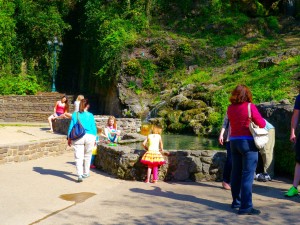
Hot Springs’ hot water can be quaffed untreated from any of the taps sprinkled throughout the national park. You’ll often see residents filling up jugs of water at these fountains. Stop to chat, and they’ll usually explain to you why the particular fountain they’re filling from is “the best” and encourage you to fill a bottle too before you head home. You can choose water from nine different fountains within the national park, though note that the water from the two cold water springs is treated with an ozone filtration system.
Believing the claims of charlatans and doctors who said that the spring water would cure diseases such as rheumatism and syphilis, people poured into Hot Springs from the 1800s. The health claims and the town’s charm attracted baseball players such as Babe Ruth, boxer Joe Louis, and mobsters Al “Scarface” Capone and Lucky Luciano in the 1930s to 1960s. They found Hot Springs a welcoming place, where the law turned a blind eye toward gambling, prohibition, and prostitution. The mayor and other residents welcomed them because of their money and because of their agreement to set aside rivalries to enjoy “Bubbles” without violence.
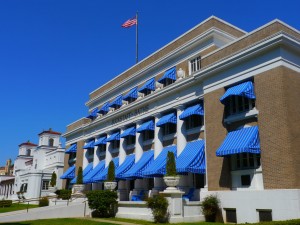
Bathhouse Row, the line of restored Victorian-era buildings lining one side of the town’s main street on the edge of the national park, is the place to get a sense of the essence of Hot Springs and its history. The first bathhouse was built in 1830, and many followed. Each bathhouse offered not only a different level of service but claimed to treat different ailments depending on which spring it drew its water from.
Most of the bathhouses are no longer used for bathing. Fordyce Bathhouse hosts a free museum. I walk through the exhibits in what many consider the most impressive building along Bathhouse Row. I can’t imagine being enclosed inside the old-fashioned steam cabinets or subjecting myself to a needle shower.
At Superior Bathhouse Brewery and Distillery, Rose Schweikhart has turned the Classical Revival bathhouse into the only brewery in a national park and the world’s only brewery to use thermal spring water as the main ingredient. You can dine in their restaurant and enjoy house-made beer, spirits, and root beer with your meal.
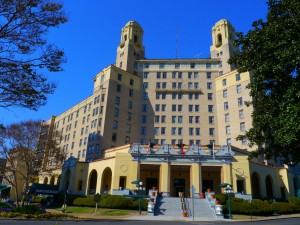
There are a few places where you can still take the waters. Thermal water spa services are found at Buckstaff Bathhouse, which has been continuously operating since 1912. At The Arlington, a historic castle-like hotel across the street from Bathhouse Row, try The Works: a mineral water bath, steam, sitz bath, sauna, massage, and an efficient medical approach that isn’t usually seen in modern spas.
It is at Quapaw Baths where I glisten. I try each of the four different-temperature pools under stained-glass skylights in this 1920s Spanish Colonial Revival building with a Moorish dome. In the basement is the steam cave. The small rock-walled room gathers the radiant heat from the Quapaw Spring that flows underneath the building. It’s said that this particular spring is one of the most mineral-rich and curative in the area. All I can tell you is that I feel so welcomed and at home here, I’m tempted to move to Hot Springs, too.
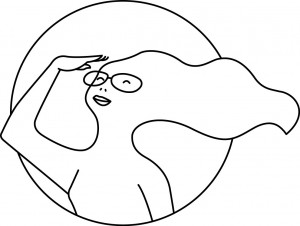
Note: Johanna’s visit to Hot Springs was via a press trip hosted by the Convention and Visitors’ Bureau, but all opinions expressed here are her own, and no one from the CVB or any of the businesses mentioned reviewed or approved her article.
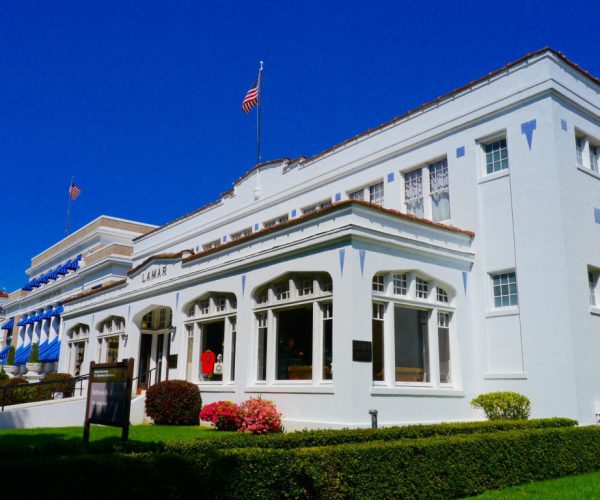
Leave a Reply